A lyric soprano is a type of operatic soprano voice that has a warm quality with a bright, full timbre that can be heard over an orchestra. The lyric soprano voice generally has a higher tessitura than a soubrette and usually plays ingenues and other sympathetic characters in opera. Lyric sopranos have a range from approximately middle C (C4) to "high D" (D6). [1] There is a tendency to divide lyric sopranos into two groups: light and full. [2]
A light-lyric soprano has a bigger voice than a soubrette but still possesses a youthful quality. [3] There are a wide variety of roles written for this voice, and they may sing soubrette, baroque and other light roles as well. [4]
Source: [2]
A full-lyric soprano has a more mature sound than a light-lyric soprano and can be heard over a bigger orchestra. [3] This more mature sound may make a full-lyric less suitable for some of the lighter roles. Occasionally a full lyric will have a big enough voice that she can take on much heavier roles, using volume in place of vocal weight. This is done when a more lyric timbre is desired in an otherwise heavier role. Otherwise full lyric sopranos need be judicious with spinto and other heavy roles to prevent vocal deterioration. [1]
Source: [2]
A soprano is a type of classical female singing voice and has the highest vocal range of all voice types. The soprano's vocal range (using scientific pitch notation) is from approximately Middle C (C4) = 261 Hz to "high A" (A5) = 880 Hz in choral music, or to "soprano C" (C6, two octaves above middle C) = 1046 Hz or higher in operatic music. In four-part chorale style harmony, the soprano takes the highest part, which often encompasses the melody. The soprano voice type is generally divided into the coloratura, soubrette, lyric, spinto, and dramatic soprano.
A tenor is a type of classical male singing voice whose vocal range lies between the countertenor and baritone voice types. It is the highest male chest voice type. Composers typically write music for this voice in the range from the second B below middle C to the G above middle C (i.e. B2 to G4) in choral music, and from the second B flat below middle C to the C above middle C (B♭2 to C5) in operatic music, but the range can extend at either end. Subtypes of tenor include the leggero tenor, lyric tenor, spinto tenor, dramatic tenor, heldentenor, and tenor buffo or spieltenor.
A contralto is a type of classical singing voice whose vocal range is below that of the mezzo-soprano. The contralto voice is not to be confused with 'alto' voice in choral music as it is not the same, although some contraltos may sing the alto part in a choir.
A mezzo-soprano or mezzo (; Italian:[ˌmɛddzosoˈpraːno]; meaning "half soprano") is a type of classical female singing voice whose vocal range lies between the soprano and the contralto voice types. The mezzo-soprano's vocal range usually extends from the A below middle C to the A two octaves above (i.e. A3–A5 in scientific pitch notation, where middle C = C4; 220–880 Hz). In the lower and upper extremes, some mezzo-sopranos may extend down to the F below middle C (F3, 175 Hz) and as high as "high C" (C6, 1047 Hz). The mezzo-soprano voice type is generally divided into the coloratura, lyric, and dramatic.
The German Fach system is a method of classifying singers, primarily opera singers, according to the range, weight, and color of their voices. It is used worldwide, but primarily in Europe, especially in German-speaking countries and by repertory opera houses.
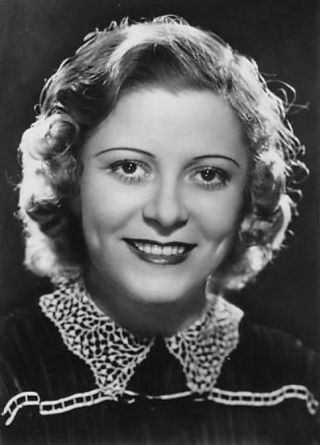
Maria Cebotari was a Bessarabian-Romanian lyric coloratura soprano. She was an opera singing star of the 1930s and 1940s.

A soubrette is a female minor stock character in opera and theatre, often a pert lady's maid. By extension, the term can refer generally to any saucy or flirtatious young woman. The term arrived in English from Provençal via French, and means "conceited" or "coy".
A coloratura soprano is a type of operatic soprano voice that specializes in music that is distinguished by agile runs, leaps and trills.
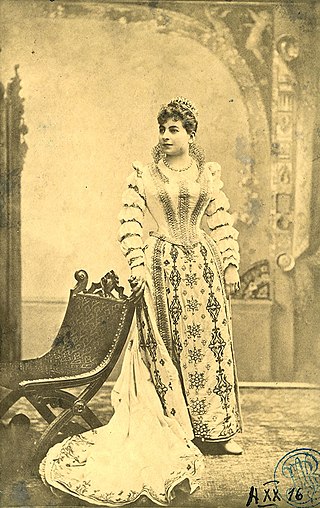
Hariclea Darclée was a celebrated Romanian operatic spinto soprano of Greek descent who had a three-decade-long career.
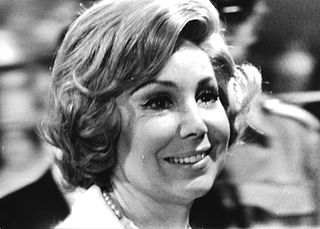
Anneliese Rothenberger was a German operatic soprano who had an active international performance career which spanned from 1942 to 1983. She specialized in the lyric coloratura soprano repertoire, and was particularly admired for her interpretations of the works of Wolfgang Amadeus Mozart and Richard Strauss.
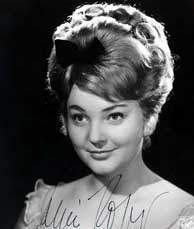
Lucia Popp was a Slovak operatic soprano. She began her career as a soubrette, and later moved into the light-lyric and lyric coloratura soprano repertoire and then the lighter Richard Strauss and Wagner operas. Her career included performances at Vienna State Opera, the Metropolitan Opera, Covent Garden, and La Scala. Popp was also a highly regarded recitalist and lieder singer.
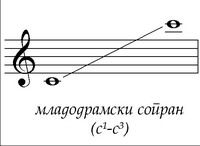
A spinto soprano is a type of operatic soprano voice that has the limpidity and easy high notes of a lyric soprano, yet can be "pushed" on to achieve dramatic climaxes without strain. This type of voice may possess a somewhat darker timbre, too, than the average lyric. Note that a “Lirico spinto” is another fach where it is specifically a spinto who has fioritura and high coloratura as well. A lirico spinto is a very uncommon voice type that can be cast in anything from Mimi, Lucia, Violetta and Wagner. They essentially can do the largest variation of roles.
A dramatic soprano is a type of operatic soprano with a powerful, rich, emotive voice that can sing over, or cut through, a full orchestra. Thicker vocal folds in dramatic voices usually (but not always) mean less agility than lighter voices but a sustained, fuller sound. Usually this voice has a lower tessitura than other sopranos, and a darker timbre. They are often used for heroic, often long-suffering, tragic women of opera. Dramatic sopranos have a range from approximately low A (A3) to "high C" (C6). Some dramatic sopranos, known as Wagnerian sopranos, have an exceptionally big voice that can assert itself over a large orchestra (of more than 80 or even 100 players). These voices are substantial, often denser in tone, extremely powerful and, ideally, evenly balanced throughout the vocal registers. Wagnerian sopranos usually play mythic heroines. Successful Wagnerian sopranos are rare and often Wagnerian roles are performed by Italianate dramatic sopranos.
A bass is a type of classical male singing voice and has the lowest vocal range of all voice types. According to The New Grove Dictionary of Opera, a bass is typically classified as having a vocal range extending from around the second E below middle C to the E above middle C (i.e., E2–E4). Its tessitura, or comfortable range, is normally defined by the outermost lines of the bass clef. Categories of bass voices vary according to national style and classification system.
This list includes opera productions of the Opera Group and Opera Company of Boston from 1958 to 1990.
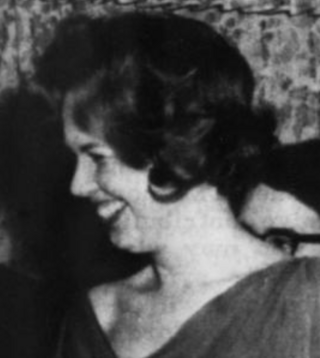
Kay Griffel is an American operatic spinto soprano.
Heather Engebretson is a Chinese-American operatic soprano who made a career mostly in Europe. Based at German opera ensembles for several years, she has worked freelance from 2017, and widened her repertoire from coloratura roles to leading characters such as Puccini's Madama Butterfly. She has been praised for her convincing acting as well as the expressiveness of her lyric voice, with performances including the Royal Opera House in London, the Bolshoi Theatre and Oper Frankfurt.
Ana María González is a Spanish lyric soprano trained in Argentina, known for performing at the Teatro Colón from 1973 to 1994. Although associated with the Italian lyric repertoire, she also excelled in lyric soprano roles of the French repertoire such as Manon, Marguerite, and Juliette, which brought her international fame.
Olena Mykolajiwna Tokar is a Ukrainian operatic lyric soprano. She has been a member of the Oper Leipzig since 2010, and has appeared in Europe including at the Verbier Festival as Puccini's Mimì, at the Vilnius Opera as Gounod's Marguerite, as Verdi's La traviata at the Trondheim Opera, and as Gounod's Juliette at the Grange Park Opera. She recorded a collection of art songs by women composers including Clara Schumann and Vítězslava Kaprálová, with pianist Igor Gryshyn.
Barbara Daniels is an American operatic soprano.
Notes
Sources